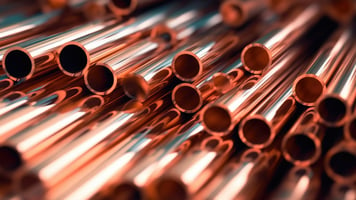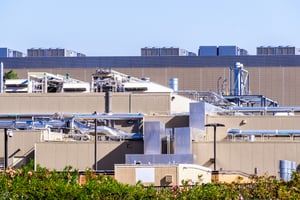A Comparative Study of Small-Diameter Copper Tubes with LU-VE With growing concerns about...
Case Study: Midea Split Air Conditioning System Reduced Charge with 4 mm Copper Tubes
As the industry shifts towards smaller-diameter tubing to improve heat transfer in heat exchangers, Original Equipment Manufacturers (OEMs) have increasingly adopted 5mm diameter copper tubes in recent years. These small-diameter tubes offer energy savings, work well with environmentally friendly refrigerants, and can reduce the weight of heat exchangers without compromising performance.
To address rising metal prices, OEMs, designers, and engineers are exploring innovative solutions to optimize manufacturing processes. The overall cost of heat exchangers is influenced by the core and frame materials, including tubes, fins, and sheet metal.
The Impact of Small-Diameter Copper Tubes on Performance and Cost
To stay competitive without sacrificing quality, manufacturers are exploring ways to reduce the weight of heat exchanger components. GD Midea Refrigeration Equipment Co., Ltd., a leading residential and commercial air conditioner manufacturer, aimed to miniaturize its heat exchangers. Given that the heat exchanger is the largest component of an air conditioner, reducing its size will significantly contribute to the overall miniaturization of the units.
One effective approach is replacing existing heat-exchanging tubes with small-diameter copper tubes. This shift to small-diameter tube fin-type heat exchangers in residential air conditioners offers substantial savings in manufacturing costs.
Research and Key Findings
GD Midea Refrigeration Equipment Co., Ltd. conducted research to demonstrate how air conditioning systems can be miniaturized without sacrificing performance. Midea designed a heat exchanger using 4mm copper tubes for performancetesting in split air conditioners. The results were promising: incorporating 4mm copper tubes reduced the heat exchanger's volume and cost while significantly decreasing the refrigerant charge.
Midea explored various design configurations, focusing on capacity, refrigerant type, and volume. They examined three scenarios: a base design with a reduced capacity of 2600 W using R410A, an enhanced capacity of 3500 W with R410A, and another 3500 W capacity using R290 refrigerant. The primary objective was maintaining optimal performance levels while reducing internal volume and cost through weight reduction strategies.

Experiments on three models revealed notable differences when using the 4mm tube heat exchangers compared to the 5mm prototypes.
For the baseline model using R410A at a reduced capacity, refrigeration capacity increased by 1.9%, with a 2.55% rise in power consumption and a 0.6% reduction in the coefficient of performance (COP). The refrigerant charge decreased by 18.4%.
In the second scenario with R410A, refrigeration capacity increased by 0.4%, power consumption rose by 1.86%, COP decreased by 1.5%, and refrigerant charge decreased by 19.6%.
In the third scenario with R290, refrigeration capacity improved by 1.5%, power consumption rose by 1.99%, COP decreased by 0.73%, and the refrigerant charge was reduced by 16.3%. The reduction in tube diameter and reuse of the prototype manifold contributed to these variations.
The experimental results with R410A and R290 refrigerants demonstrate that the newly developed heat exchanger with 4mm copper tubes provides superior cooling capacity compared to the 5mm prototype. While power consumption increases and COP decreases, the refrigerant charge is reduced by approximately 20%, offering notable economic and safety benefits.
To learn more about the Midea case study and Designing for the New Refrigerants, you can access the entire webinar with Cara Martin, COO of OTS R&D, Inc., here.


